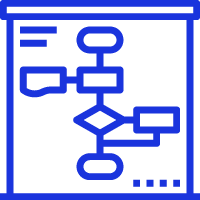Course of Action Assessment
Overview
Impact
Identify critical business problems
Pinpoint the root causes of infrastructure issues, bottlenecks and overspending within your organization to free up additional sources of spending, eliminate time-intensive procedures and allow for long-term business growth.
Uncover opportunities
Drive data-driven decisions that support modernization, new capabilities and successful adaptation to changing market conditions.
Process improvement
Evaluate processes to identify opportunities to reduce complexity and maximize efficiency.
Realize value quickly
Identify actionable quick wins to implement immediately either after or during the assessment.
Sample use cases
- Long-term strategic planning
- Cloud transformation/migration
- Hybrid and multi-cloud strategy
- Business application modernization
- Data integration
- Application development
- Advanced analytics
- Operations optimization
- Process improvement
- Supply chain management
Course of Action Assessments the Blueprint Way

Blueprint believes solutions should always be customized to fit specific business needs and goals. A CoAA allows Blueprint to understand those requirements before developing a custom solution, eliminating the need for later rework. Through extensive interviews with key stakeholders and research into the company’s data infrastructure, supply chain, processes and pain points, Blueprint identifies the root cause of critical business problems, not just the symptoms of those problems. The next step is to outline the current process flow and technical architecture to establish a baseline as a foundation for improvement. This phase can often include a Project Definition Workshop. As a result of the CoAA, Blueprint recommends a desired future state and a roadmap to achieve that future state. It breaks down the project scope, objectives, deliverables and quick wins that drive ROI, providing everyone with a clear understanding of the vision, what all should be included in the project and why it is needed.
Assessment Deliverables
By the end of the assessment, Blueprint will deliver the following items:

A detailed business analysis report
We will answer key business questions and identify insights as a result of the assessment.

Current state of the business definitions
With a clear understanding of the current landscape, we will identify and outline pain points, run risk analysis and offer recommendations for future adaptation.

Reference architecture / technical plan
We will provide reference architecture in support of the data requirements, analytical desires and security requirements.

A roadmap for the future
Blueprint’s architects will create a prioritized and sequential plan to implement for both short-term and long-term goals.
Project story
CoAA provides the keys to unlock restaurant chain data
An international quick-serve restaurant chain was struggling to leverage the total value of its siloed data. With more than 5,000 restaurants around the world, this QSR company should have had enormous amounts of actionable, insightful business intelligence at both the corporate and franchise levels, including sales and inventory data, customer order preferences and locations and labor data. But instead, sales reports and marketing insights were labor-intensive to produce and untrustworthy. The company reached out to Blueprint to help identify its best path forward.
During the assessment, Blueprint narrowed in on several key areas negatively impacting the company’s ability to leverage its data. The company had more than 36 different software systems, services and data warehouses, many of which were not integrated. Those that were integrated often produced inaccurate data. Some data sources were only syncing twice a week, and all sales transactions and labor data were entered manually. Employees didn’t trust the data, which led to them spending hours or days validating and manually copying data from one system to another to run reports.
Within 90 days, Blueprint presented a design for an improved data architecture, a set of guiding principles to help the company make more informed tech decisions and a roadmap to untangle and modernize its data architecture. The roadmap included Blueprint’s recommendations on which legacy and duplicative systems to retire and how best to consolidate its BI systems and generate reports. It also became the guide for Blueprint’s continued work to create a Modern Data Estate for the company.
Let's build your future.
Contact us and discover how we can help you.
